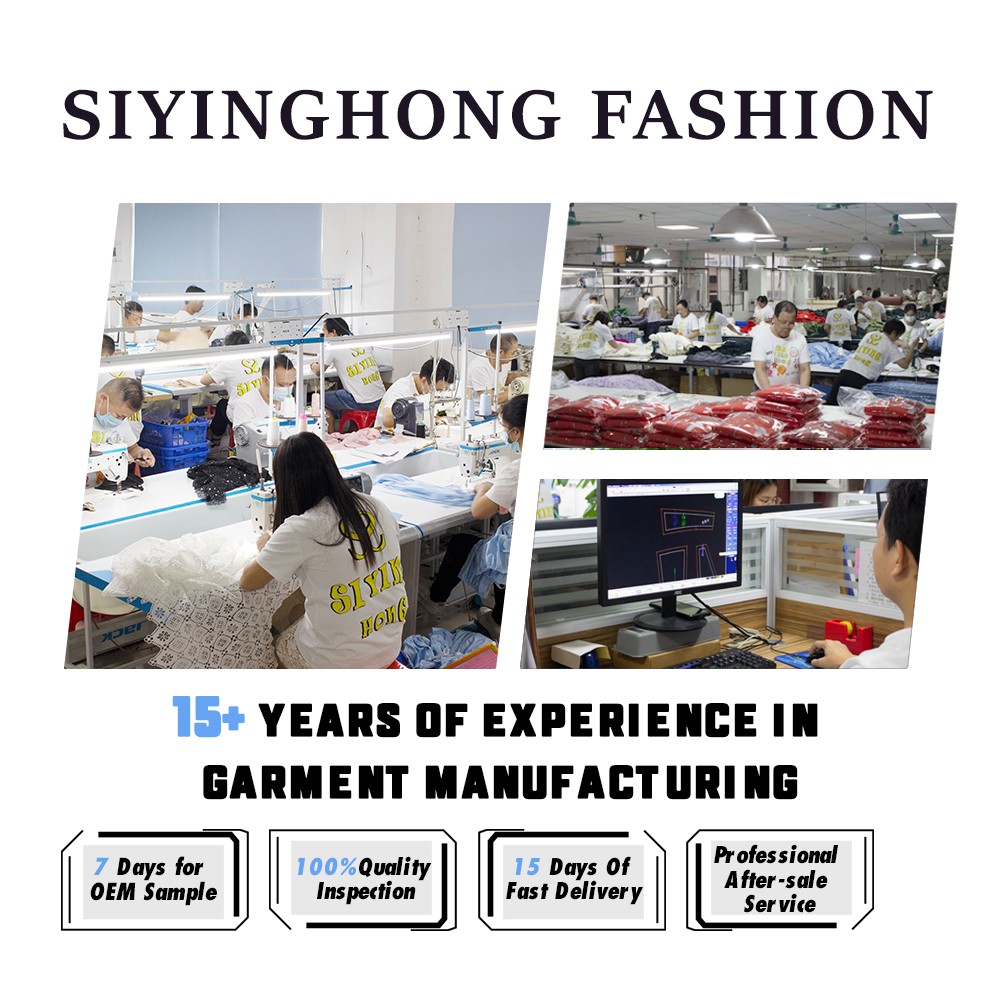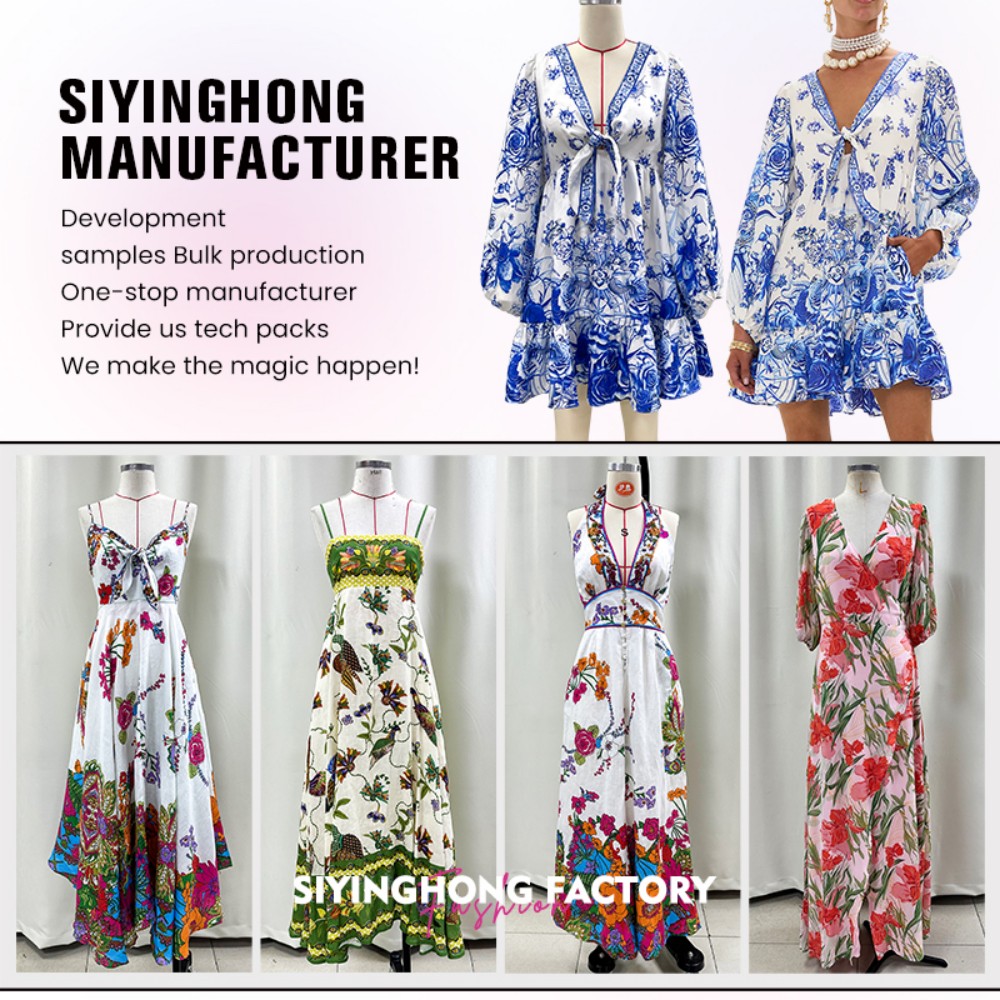Garment factory production process:
cloth inspection → cutting → printing embroidery → sewing → ironing → inspection → packaging
1. Surface accessories into the factory inspection
After entering the factory, the quantity of the fabric should be checked and the appearance and internal quality should be checked. Only those that meet the production requirements can be put into use.
Before mass production, technical preparation should be carried out first, including the formulation of process sheets, samples and the production of sample clothes. The sample clothes can enter the next production process after customer confirmation.
Fabrics are cut and sewn into semi-finished products, some woven fabrics are made into semi-finished products, according to the special process requirements, after finishing processing, such as clothing washing, clothing sand washing, wrinkle effect processing, and so on, and finally through the auxiliary process of keyhole nail and ironing process, and then after inspection and packaging into the warehouse.

2.Purpose and requirements of fabric inspection Good fabric quality is an important part of controlling the quality of finished products.
Through the inspection and determination of the incoming fabrics, the genuine rate of clothing can be effectively improved. Fabric inspection includes two aspects: appearance quality and internal quality. The main inspection of the appearance of the fabric is whether there is damage, stains, weaving defects, color difference and so on.
The sand-washed fabric should also pay attention to whether there are sand channels, dead pleats, cracks and other sand washing defects. Defects that affect the appearance should be marked out in the inspection and avoided during tailoring.
The intrinsic quality of the fabric mainly includes shrinkage rate, color fastness and gram weight (m meters, ounces) three contents. When conducting inspection sampling, samples of different manufacturers, different varieties and different colors should be clipped for testing to ensure the accuracy of the data.
At the same time, the auxiliary materials entering the factory should also be tested, such as the shrinkage rate of elastic band, the bonding fastness of the adhesive lining, the smoothness of the zipper, etc., and the auxiliary materials that cannot meet the requirements will not be put into use.
3.Main contents of technical preparation
Before mass production, technical personnel must first make technical preparations for large-scale production. Technical preparation includes three contents: process sheet, template formulation and sample clothing production. Technical preparation is an important means to ensure that mass production goes smoothly and the final product meets customer requirements.
The factory's process sheet is a guiding document in clothing processing, which puts forward detailed requirements for clothing specifications, sewing, ironing, packaging, etc., and also clarifies details such as clothing accessories collocation and stitch density. Each process in clothing processing should be carried out in strict accordance with the requirements of the process sheet. Template production requires accurate size and complete specifications.
The contours of the relevant parts were accurately matched. The sample shall be marked with the garment model number, parts, specifications, direction of the silk locks and quality requirements, and the sample composite seal shall be affixed to the relevant splicing place. After the completion of the process sheet and template formulation, the production of small-batch sample clothes can be carried out, the discrepancies can be corrected in time for the requirements of customers and the process, and the process difficulties can be overcome, so that the large-scale flow operation can be carried out smoothly. After the sample is confirmed and signed by the customer, it becomes one of the important inspection basis.
4. Cutting process requirements
Before cutting, draw the layout according to the template, and "complete, reasonable and economical" is the basic principle of the layout.
The main process requirements in the cutting process are as follows:
● Clear the quantity when hauling material, pay attention to avoid defects.
● Fabrics dyed or sandwashed in different batches should be cut in batches to prevent color differences on the same garment. For a fabric there is a color difference phenomenon to carry out color difference arrangement.
● When arranging materials, pay attention to the straight silk of the fabric and whether the direction of the fabric is in line with the process requirements. Do not reverse the arrangement of the pile fabric (such as velvet, velvet, corduroy, etc.), otherwise it will affect the depth of the color of the clothing.
● For the striped fabric, pay attention to the alignment and positioning of the stripes in each layer when dragging material to ensure the coherence and symmetry of the stripes on the clothing.
● Cutting requires accurate cutting, straight and smooth lines. The paving type shall not be too thick, and the upper and lower layers of the fabric shall not be biased.
● Cut knife edge according to template alignment mark.
● Care should be taken not to affect the appearance of the garment when using cone-hole marking. After cutting, the quantity should be counted and the film should be checked, and the clothes should be piled and bundled according to the clothing specifications, and the ticket should be attached to indicate the payment number, part and specification.
6 .Sew
Sewing is the central process of clothing processing, clothing sewing according to the style, craft style, can be divided into machine sewing and hand sewing two kinds. Implement flow operation in the sewing process.
Adhesive interlining is widely used in clothing processing, its role is to simplify the sewing process, make the quality of clothing uniform, prevent deformation and wrinkling, and play a certain role in clothing modeling. The types of non-woven fabrics, woven goods, knitwear as the base cloth, the use of adhesive interlining should be selected according to the clothing fabric and parts, and to accurately grasp the time, temperature and pressure of adhesive, so as to achieve better results.
7. Keyhole fastener
The keyholes and buckles in the clothing are usually machined, and the buttonholes are divided into two types according to their shape: flat and eye-type holes, commonly known as sleeping holes and dove-eye holes. Sleep hole is widely used in shirts, skirts, pants and other thin clothing products. Dove-eye holes are mostly used on coats of thick fabrics such as jackets and suits.
Keyhole should pay attention to the following points:
● The buttonhole position is correct.
● Whether the buttonhole size matches the button size and thickness.
● Whether the buttonhole opening is cut properly.
Elastic (elastic) or very thin fabrics, to consider the use of keyhole holes in the inner layer of cloth reinforcement. The sewing of buttons should correspond to the position of the buttonhole, otherwise it will cause the distortion and skew of the garment due to the incorrect buttonhole position. When stitching, attention should also be paid to whether the amount and strength of the stitching line are enough to prevent the buttons from falling off, and whether the number of stitching stitches on the thick fabric clothing is sufficient.
8. Finish ironing
Ironing People often use "three-point sewing and seven-point ironing" to adjust the ironing is an important process in clothing processing.
Avoid the following phenomena:
● The ironing temperature is too high and the ironing time is too long, which causes the aurora and burning phenomenon on the surface of the clothing.
● Small corrugation and other ironing defects are left on the surface of the garment.
● There are missing hot parts.
9.Garment inspection
The inspection of clothing should run through the whole process of cutting, sewing, keyhole stitching, ironing and so on. A comprehensive inspection of the finished product should also be carried out before the packaging is put into storage to ensure the quality of the product.
The main contents of factory pre-shipment quality inspection are:
● Whether the style is the same as the confirmation sample.
● Whether the size specifications meet the requirements of the process sheet and sample clothes.
● Whether the stitching is correct, whether the sewing is regular and uniform.
● Check whether the matching check is correct for the clothing of the checked fabric.
● Whether the fabric silk is correct, whether there are defects on the fabric, and whether there is oil.
● Whether there is a color difference problem in the same garment.
● Whether the ironing is good.
● Whether the adhesive lining is firm and whether there is gelatinization.
● Whether the thread ends have been trimmed.
● Whether the clothing accessories are complete.
● Whether the size mark, washing mark and trademark on the clothing are consistent with the actual contents of the goods, and whether the position is correct.
● Whether the overall shape of the garment is good.
● Whether the packing meets the requirements.

10.Packing and warehousing
The packaging of clothing can be divided into two kinds of hanging and box, and the box is generally divided into inner packaging and outer packaging.
Inner packaging refers to one or more garments into a plastic bag. The garment's model number and size should be consistent with those marked on the plastic bag. The packaging should be smooth and beautiful. Some special styles of clothing should be specially treated when packaging, such as twisted clothing to be packaged in twisted roll form to maintain its styling style.
The outer packaging is generally packed in cartons, and sizes and colors are matched according to customer requirements or process instructions. The packaging form generally has four kinds of mixed color code, single color code, single color code, and single color code. When packing, we should pay attention to complete quantity, accurate color and size matching. The outer box is painted with the box mark, indicating the customer, the port of shipment, the box number, the quantity, the place of origin, etc., and the content is consistent with the actual goods.
Post time: Apr-22-2025






